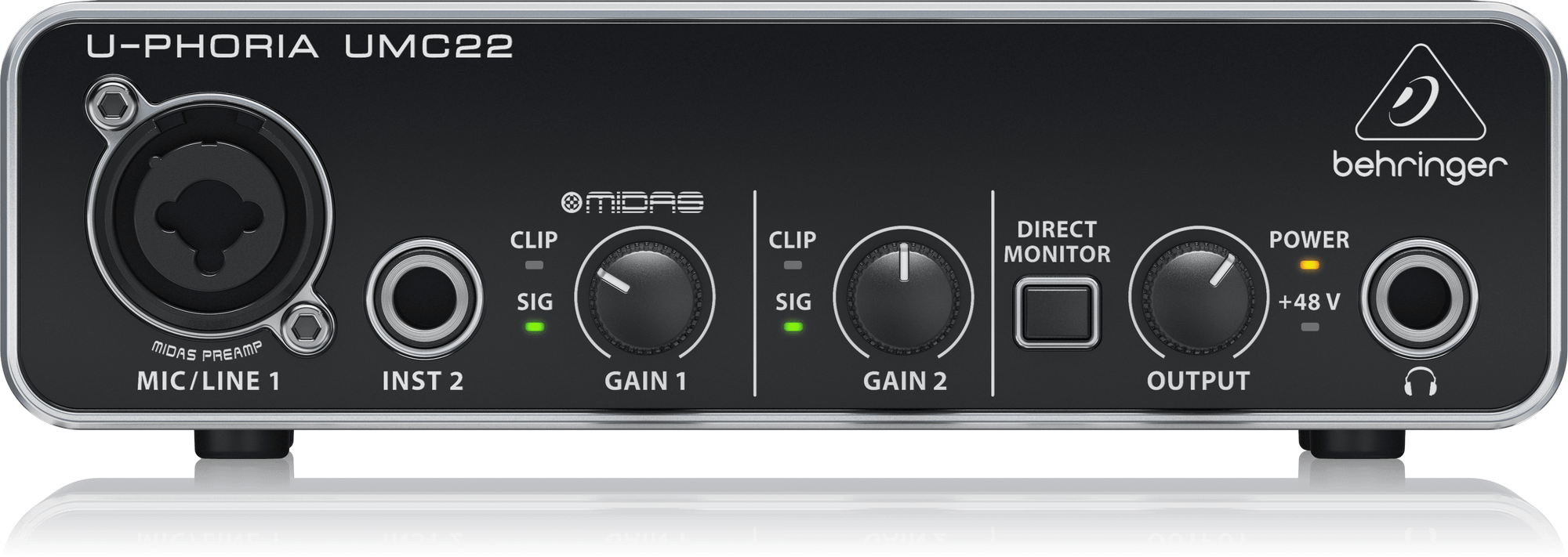- ASIO4All recognizes the SX2 as an ASIO device though, and I can get regular computer audio through. I attempted to force load the drivers by extracting them from the.exe, but there's no.inf. I also verified that midi is working using Midi-Ox, and the controller works with Rekordbox DJ, just no sound.
- Right-click the controller device; Choose Properties; Click on the Driver tab. If the driver version is 9.21.0.3755, you have the driver that was sent to you incorrectly. Click Uninstall Device.
- Scream - Virtual network sound card for Microsoft Windows. Scream is a virtual device driver for Windows that provides a discrete sound device. Audio played through this device is published on your local network as a PCM multicast stream. Receivers on the network can pick up the stream and play it through their own audio outputs.
- Sound Card Controller Driver Interfere With Microphone Free
- Sound Card Controller Driver Interfere With Microphone Windows 10
- Sound Card Controller Driver Interfere With Microphone Download
- Sound Card Controller Driver Interfere With Microphone Windows 7
Sound & Audio: Realtek onboard sound card with 5.1 surround speaker fill problem I recently installed a new motherboard Asus Sabertooth 990FX. It has an on-board sound card 'Realtek® ALC 892 8-Channel High Definition Audio CODEC'. I'm using 5.1 surround speakers from creative. If you want to update your Realtek audio driver and Realtek Audio Console further, then go to Microsoft Update Catalog and search for the following: realtek 1903 media - this will give you 6.0.8849.1 driver dating end of November 2019 realtek 1903 - this will give you 11.0.6000.736 software components Download them and unzip them.
If you have encountered the “No audio device installed” error message or have no sound coming from the speakers connected to your PC, your issues may be related to the multimedia audio controller. If your multimedia audio controller drivers are corrupt or outdated, there is a high chance you will run into sound issues on your computer. In this post, we will tell you how to fix the “no audio device installed” issue in Windows 10.
What Is the Multimedia Audio Controller?
Multimedia audio controller drivers allow your operating system to communicate with the sound hardware such as your speakers, headphones, etc. Thus, if there is a problem with these drivers, your connected audio devices won’t work properly.
How to Remove the ‘No Drivers Installed for this Device’ Error Message?
As there are several issues that can be causing the problem, there are also plenty of ways you can try to fix it. These include:

- Updating the multimedia audio controller driver
- Uninstalling the multimedia audio controller driver
- Checking for available Windows updates
- Adding a Legacy hardware
We will go over these solutions one by one, starting at the top. If the first option does not work, proceed to the next solution in the list — and so on.
Now, before we get into the steps for each of the above fixes, we suggest you create a System Restore Point to protect your OS in case of the rare occasion that anything goes wrong.
The first thing you will need to do is make sure that System Restore is enabled on your PC.
Typically, this utility is always on by default, but if it has been manually disabled, you will need to turn it back on again. Here’s what to do:
- In the search bar, type “system restore” (no quotes).
- Select Create a restore point.
- Navigate to System Protection.
- Choose the drive you want to check and click Configure.
- Make sure Turn on system protection is enabled — this is needed for the System Restore Utility to be turned on.
Now, proceed to creating a System Restore Point:
- Right-click the Windows icon on your taskbar.
- Go to Control Panel > System and Maintenance > System.
- In the left section, select System Protection.
- On the System Protection tab, select Create.
- Type a description for the restore point you want to create (you can use a specific date or describe it as “before clean install”, for example).
- Click Create.
After you have created a restore point, we can proceed to the first solution.
Option One: Update the Multimedia Audio Controller Driver
An outdated driver can be the cause of many problems on your PC. It is, thus, very important to keep your system drivers up to date. There are two ways in which you can go about updating your multimedia audio controller driver: you can do it manually or automatically.
Updating your drivers manually is typically recommended for more experienced users. You will need to locate the outdated drivers yourself, download the latest available versions from the manufacturer’s website, and install them on your PC. This can be quite a time-consuming process. Plus, if you do make a mistake when updating your drivers, this can result in more and bigger issues for your computer.
Resolve PC Issues with Driver Updater
Unstable PC performance is often caused by outdated or corrupt drivers. Auslogics Driver Updater diagnoses driver issues and lets you update old drivers all at once or one at a time to get your PC running smoother
If you’ve never updated your drivers before and don’t feel like taking any new risks, you can use specialized software to do work for you. A program like Auslogics Driver Updater will run an automatic scan of your system drivers for existing and potential issues, prepare a report on outdated or missing drivers it has detected and then will update them to the latest manufacturer-recommended versions in just one click — and this goes for all types of drivers on your system, not just the multimedia audio controller driver.
Alternatively, go through the following steps:
- On your keyboard, press Win + R key combo.
- Type “devmgmt.msc” (no quotes) and hit Enter to launch the Device Manager.
- Expand Sound, video, and game controllers and locate Multimedia Audio Controller.
- If you can’t, then go to Other devices.
- Here, find Multimedia Audio Controller.
- Right-click Multimedia Audio Controller and click Update.
- On the next screen, select Search automatically for updated driver software.
- Wait for the process to complete.
- If any new drivers are found, make sure to click Install to complete the process.
- Once finished, select Close and restart your PC to apply the changes.
- However, if your driver is up-to-date, you will just see a message saying “The best driver software for your device is already installed.”
- Click Close — there is nothing left for you to do since the drivers are already up-to-date.
If you’re still bothered by the multimedia audio controller driver issue, proceed to the next solution.
Option Two: Uninstall the Multimedia Audio Controller Driver

- On your keyboard, press the Win + R key combo.
- Type “devmgmt.msc” (no quotes) and hit Enter to launch the Device Manager.
- Expand Sound, video and game controllers and locate Multimedia Audio Controller.
- Alternatively, go to Other devices and right-click Multimedia Audio Controller.
- Click Uninstall.
- Click Yes to confirm the uninstallation.
- Once the process completes, restart your PC.
- Once the system restarts, Windows will try to automatically install the needed drivers for Multimedia Audio Controller.
- If this doesn’t work, go to the manufacturer’s website to download the drivers manually.
Option Three: Checking for Windows Updates
- On your keyboard, press the Win + I key combo.
- Go to Settings and select Update & Security.
- In the left-side menu, click Windows Update.
- Select Check for updates.
- If updates are available, click on Download & Install updates.
If this does not help, proceed to the final solution.
Option Four: Adding a Legacy Hardware
If none of the above methods have been successful, try adding a Legacy Hardware to fix the problem.
Sound Card Controller Driver Interfere With Microphone Free
- On your keyboard, press the Win + R key combo.
- Type “devmgmt.msc” (no quotes), then click OK to open the Device Manager.
- In the Device Manager, select Sound, video and game controllers.
- Go to Action > Add legacy hardware.
- Click Next.
- Select the Search for and install the hardware automatically (Recommended) option.
- Install the needed drivers manually and restart your system for the changes to take effect.
Now you know how to resolve the multimedia audio controller driver issue in Windows 10. Which of the above solutions has been the most successful? Share in the comments below.
Sound Card Controller Driver Interfere With Microphone Windows 10
The package provides the installation files for Realtek Intel Smart Sound Technology (Intel SST) Audio Controller Driver version 10.23.0.1802.Sound Card Controller Driver Interfere With Microphone Download
Sound Card Controller Driver Interfere With Microphone Windows 7
If the driver is already installed on your system, updating (overwrite-installing) may fix various issues, add new functions, or just upgrade to the available version. Take into consideration that is not recommended to install the driver on Operating Systems other than stated ones.
In order to manually update your driver, follow the steps below (the next steps):
1. Extract the .cab file to a folder of your choice
2. Go to Device Manager (right click on My Computer, choose Manage and then find Device Manager in the left panel), or right click on Start Menu for Windows 10 and select Device Manager
3. Right click on the hardware device you wish to update and choose Update Driver Software
4. Choose to select the location of the new driver manually and browse to the folder where you extracted the driver
5. If you already have the driver installed and want to update to a newer version got to 'Let me pick from a list of device drivers on my computer'
6. Click 'Have Disk'
7. Browse to the folder where you extracted the driver and click Ok
About Sound Card Drivers:
Usually, Windows operating systems apply a generic audio driver that allows computers to recognize the sound card component and make use of its basic functions.
When enabled by proper files, the characteristics of the sound card (like model, manufacturer, number of channels) are completely available to computers, and all its features are made accessible.
Updating the audio version can improve sound quality, resolve different compatibility issues, fix related errors spotted throughout the product's usage, add support for new operating systems, and bring various other changes.
As for applying this package, the steps are quite simple since each producer intends to uncomplicate things for users: just download the package, run the setup, and follow the on-screen instructions.
Bear in mind that, even though other operating systems might be compatible as well, it is not recommend that you apply any software on platforms other than the specified ones. Also, when the installation has finished, do perform a restart to ensure that all changes take effect properly.
Therefore, if you wish to install this audio version, click the download button and apply the package. Remember to check with our website as often as possible to stay “updated one minute ago.”
It is highly recommended to always use the most recent driver version available.
Try to set a system restore point before installing a device driver. This will help if you installed an incorrect or mismatched driver. Problems can arise when your hardware device is too old or not supported any longer.
- COMPATIBLE WITH:
- Windows 10
- file size:
- 91.5 MB
- filename:
- 438c3777-b393-4053-8a36-3a957e3fbab5_1ae037c8acc497b085276f24b956eba7511387ef.cab
- CATEGORY:
- Sound Card
